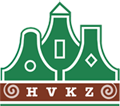Wandelen in Koog aan de Zaan
“Koog” aan de Zaan betekent: een stuk buitendijks land, aan de Zaan. Het dorp werd in 1543 voor het eerst vermeld en bezat toen ongeveer 30 bewoners. Zij woonden zeer waarschijnlijk in de buurt van de sluis. Vroeg in de 17e eeuw werden er al molens gebouwd op de Koger Hem. Het is waarschijnlijk het oudste industriegebied van Europa.
Zetmeel- (ontstaan uit tarwestijfsel fabrikant Honig, nu Tate & Lyle) en cacao industrie (Cacao de Zaan, nu Olam Cocoa) zijn tot op heden aanwezig. Wonen en werken op één plek is hier nog steeds gewoon.
Tot 1721 deelden Koog en Zaandijk school, kerk, kerkhof, armen- en weeszorg gemeenschappelijk, daarna ging men uitsluitend de eigen bewoners verzorgen.
Een hechte band bleef echter altijd bestaan. In de 19e eeuw werd de band verstevigd: de gemeenten kregen een gezamenlijk spoorwegstation en één postkantoor. Het verenigingsleven uit beide gemeenten overlapte elkaar.
Walking route Old Koog aan de Zaan
“Koog” aan de Zaan means: an area of land outside the dyke, on the Zaan river. The village was first mentioned in 1543 when it had about 30 inhabitants who probably lived next to the lock. Early in the 17th century there were already windmills on the Koger Hem. It is probably the oldest industrial area in Europe.
The starch- (originating from the wheat starch manufacturer Honig, now Tate & Lyle) and cocoa- industries (Cocao de Zaan, now Olam Cocoa) are present to this day. Living and working in one place is still common here.
Until 1721, Koog and Zaandijk shared the care of the school, church, graveyard, poor and orphans. After that, they only looked after their own residents but a close bond always remained. In the 19th century the bond was strengthened: the district acquired a communal railway station and a post office. The social life of both municipalities overlapped.
